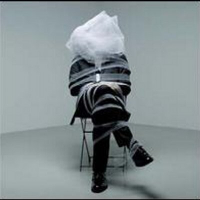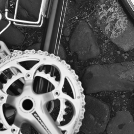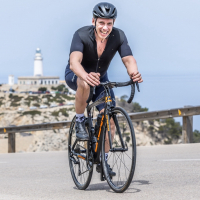Scared on descents
Comments
-
There's a particular hill that is under the trees and in winter gets green slimey stuff on it. Hard to scrub any speed even in a straight line. I might have to do some hill repeats to mtfu.Rick Chasey wrote:darkhairedlord wrote:
My fear is slippery surfaces going into the bend where, despite breaking, speed increases.Rick Chasey wrote:AberdeenAl wrote:I'm also terrible at descending borne from a speed wobble whilst descending the Cairn O Mount not far from where I stay.......this happened 6 years ago and still plays on my mind.
I've cycled in the French & Swiss Alps and dreaded most of the descents - I must be the only person to get cramp caused by stiffness / rigidity on downhill sections :-( ha ha ha
Ah sh!tter, not much you can do about speed wobbles, but being loose rather than rigid helps.
Why fear it? You can see what's up ahead, and the weather context will also help you anticipate.0 -
There's another cycling forum I frequent. Geezer descending quickly last year onto leaves etc plus a bend. Hit a wall at speed followed by much breakage and 10 months of rehabilitation.
It's very easily done so beware the 'just go for it' brigade. Ride within your capabilities, work up incrementally through practice (and coaching if that's your bag) and keep some in reserve.0 -
boblo wrote:There's another cycling forum I frequent. Geezer descending quickly last year onto leaves etc plus a bend. Hit a wall at speed followed by much breakage and 10 months of rehabilitation.
It's very easily done so beware the 'just go for it' brigade. Ride within your capabilities, work up incrementally through practice (and coaching if that's your bag) and keep some in reserve.
Sure, but being scared isn't gonna help, is it?0 -
If fear stops you getting killed, it certainly does help.Rick Chasey wrote:boblo wrote:There's another cycling forum I frequent. Geezer descending quickly last year onto leaves etc plus a bend. Hit a wall at speed followed by much breakage and 10 months of rehabilitation.
It's very easily done so beware the 'just go for it' brigade. Ride within your capabilities, work up incrementally through practice (and coaching if that's your bag) and keep some in reserve.
Sure, but being scared isn't gonna help, is it?0 -
-
Blimey Rick, why so spikey?0
-
"Hi guys,I'd like to be less scared on descents"
"well, if you don't do this, YOU'LL DIE. BE SCARED"
:roll:0 -
It is an unfortunate fact that people have died whilst descending.
Better safe than not have the chance to be sorry.
Or be sorry like Froome.The above may be fact, or fiction, I may be serious, I may be jesting.
I am not sure. You have no chance.Veronese68 wrote:PB is the most sensible person on here.0 -
PBlakeney wrote:
At the same time you want to be looking where you want to go, not looking at what you want to avoid.lettingthedaysgoby wrote:5 - Look ahead. If it's right in front of you its too late to do anything about it. Learn to read the road ahead, both in terms of how sharp corners appear to be and what the surface looks like, potential changes in grip and so on.lettingthedaysgoby wrote:6 - Practice.
As said above. Look where you want to go and not where you are going. It is like skiing. Your brain and body can sort it out if you do not confuse them with negative thoughts. There is not much point in toiling up the hills if you don't enjoy flying down the other side.0 -
There are some descents that are always going to be scary, I'm thinking in particular Riber near Matlock which has a couple of hairpins at about 25% which are loose and usually damp even in good weather. It is always going to be a struggle to scrub off enough speed before the bend, and you have to stay on the brakes as you turn, there's no leaning into the bend going on as you are going so slowly. I know a couple of good riders who descended it last winter, one came off on one of the bends and the other chose to walk around it. There are plenty of other descents in the Peak District that are similar.darkhairedlord wrote:There's a particular hill that is under the trees and in winter gets green slimey stuff on it. Hard to scrub any speed even in a straight line. I might have to do some hill repeats to mtfu.
But I don't think that it is this kind of descent that the OP is referring to, it is the nice single figure descents where cornering should be a pleasure that they want to improve.0 -
Thanks for the advice (and sympathy!) everyone. The one thing that I still feel unsure about is just how to initiate the turn into a corner (descent or not).
So, on approach to a corner (let's say a sharp-ish corner), you're taking the widest line possible on approach, braking the appropriate amount, but not too much. You get to the point where you need to initiate the turn, you're looking where you want to go, your weight is on your outside pedal, which is in the six o'clock position - what exactly do you do to initiate that turn, if it's not turning the handlebars? 0
0 -
Assuming you are correctly in the drops, just very gently apply downwards pressure on the inside handlebar and you will start to turn.0
-
i love descending and feel very relaxed whilst doing so but this year whilst skiing for the first time my body was having none of it and wouldn't relax even on gentle gradients which translated into an unpleasant experience.Rule #5 // Harden The Feck Up.
Rule #9 // If you are out riding in bad weather, it means you are a badass. Period.
Rule #12 // The correct number of bikes to own is n+1.
Rule #42 // A bike race shall never be preceded with a swim and/or followed by a run.0 -
If you are this unsure then I'd start off on a flat quiet stretch of road, get some momentum going at a comfortable speed and just gently and slowly lean side to side weaving as you go to get a feel for it. Once you you have a feel it becomes second nature which is why it is hard for us to describe, if you know what I mean.jd843 wrote:Thanks for the advice (and sympathy!) everyone. The one thing that I still feel unsure about is just how to initiate the turn into a corner (descent or not).
So, on approach to a corner (let's say a sharp-ish corner), you're taking the widest line possible on approach, braking the appropriate amount, but not too much. You get to the point where you need to initiate the turn, you're looking where you want to go, your weight is on your outside pedal, which is in the six o'clock position - what exactly do you do to initiate that turn, if it's not turning the handlebars?
Then progress to faster and downhill as you gain confidence.The above may be fact, or fiction, I may be serious, I may be jesting.
I am not sure. You have no chance.Veronese68 wrote:PB is the most sensible person on here.0 -
jd843 wrote:Thanks for the advice (and sympathy!) everyone. The one thing that I still feel unsure about is just how to initiate the turn into a corner (descent or not).
So, on approach to a corner (let's say a sharp-ish corner), you're taking the widest line possible on approach, braking the appropriate amount, but not too much. You get to the point where you need to initiate the turn, you're looking where you want to go, your weight is on your outside pedal, which is in the six o'clock position - what exactly do you do to initiate that turn, if it's not turning the handlebars?
If you have to consciously think about it you need more practice. When you drive a car the road is never straight for all your journey but when you arrive at your destination your eyes brain and hands will have kept you on the road with no conscious thought . You just do it. If you can ride a two wheel bike you are already doing that without thinking the basics.
Chill out , go at the speed you are comfortable with, and don't over think it.0 -
Find a nice section of quiet, flat road. Traffic free if possible - parks, industrial estate after hours etc.jd843 wrote:Thanks for the advice (and sympathy!) everyone. The one thing that I still feel unsure about is just how to initiate the turn into a corner (descent or not).
So, on approach to a corner (let's say a sharp-ish corner), you're taking the widest line possible on approach, braking the appropriate amount, but not too much. You get to the point where you need to initiate the turn, you're looking where you want to go, your weight is on your outside pedal, which is in the six o'clock position - what exactly do you do to initiate that turn, if it's not turning the handlebars?
Get yourself up to a decent speed on the drops then simply start playing around riding s shaped curves as you go along. Different pedal positions, move your weight around - you’ll find some positions make it harder, others easier. Eventually you’ll get the feel for what you should be doing - there’s a moment where you’re no longer fighting the bike, it will just “flow” under you with just tiny movements/weight transfers.
Once you’ve got the hang of that, go find some hills, start small, work your way up.
Have fun, enjoy it!0 -
jd843 wrote:Thanks for the advice (and sympathy!) everyone. The one thing that I still feel unsure about is just how to initiate the turn into a corner (descent or not).
So, on approach to a corner (let's say a sharp-ish corner), you're taking the widest line possible on approach, braking the appropriate amount, but not too much. You get to the point where you need to initiate the turn, you're looking where you want to go, your weight is on your outside pedal, which is in the six o'clock position - what exactly do you do to initiate that turn, if it's not turning the handlebars?
Read up on countersteering, because that's what you're doing whether you realise it or not, every time you turn the bike over a few mph.
Once you understand what is happening, it can really help.
It's mindblowing at first that you don't steer right to go right, you do the opposite :shock:0 -
dodgy wrote:jd843 wrote:Thanks for the advice (and sympathy!) everyone. The one thing that I still feel unsure about is just how to initiate the turn into a corner (descent or not).
So, on approach to a corner (let's say a sharp-ish corner), you're taking the widest line possible on approach, braking the appropriate amount, but not too much. You get to the point where you need to initiate the turn, you're looking where you want to go, your weight is on your outside pedal, which is in the six o'clock position - what exactly do you do to initiate that turn, if it's not turning the handlebars?
Read up on countersteering, because that's what you're doing whether you realise it or not, every time you turn the bike over a few mph.
Once you understand what is happening, it can really help.
It's mindblowing at first that you don't steer right to go right, you do the opposite :shock:
When riding, see how little you actually need to steer with the handlebars. It's all about the lean.0 -
I wouldn't worry too much about descending on the drops. Hands on the hood and sitting up helps to control your speed.
The worst thing is to tense up, an unfamiliar position and constantly having to brake isn't going to help.
I wouldn't try actively countersteering, shifting your weight etc. on a descent. Just relax and you'll quickly start to enjoy them.0 -
Essentially, to go left you turn the bars to the right, the bike then pitches over to the left and the bars are then turned to the left to maintain the angle of lean while keeping the bike balanced. You're not thinking about it, just doing it.0
-
frisbee wrote:I wouldn't worry too much about descending on the drops. Hands on the hood and sitting up helps to control your speed.
The worst thing is to tense up, an unfamiliar position and constantly having to brake isn't going to help.
I wouldn't try actively countersteering, shifting your weight etc. on a descent. Just relax and you'll quickly start to enjoy them.
Calling imposter....0 -
jd843 wrote:Thanks for the advice (and sympathy!) everyone. The one thing that I still feel unsure about is just how to initiate the turn into a corner (descent or not).
So, on approach to a corner (let's say a sharp-ish corner), you're taking the widest line possible on approach, braking the appropriate amount, but not too much. You get to the point where you need to initiate the turn, you're looking where you want to go, your weight is on your outside pedal, which is in the six o'clock position - what exactly do you do to initiate that turn, if it's not turning the handlebars?
I would say you lean it in, - now what that may actually be is counter steering and turning one way that makes the bike lean the other which takes it round the corner but at high speed I've never actually thought about counter steering - I have messed about with it at lower speed and for me I can't say knowledge of CS really helped or hindered. If it works for you though why not, try it and see.
I'd be on the drops too.[Castle Donington Ladies FC - going up in '22]0 -
You don’t have to counter steer. In fact it is going to make him worse if he actively tries to do that. He simply needs to look at his apex and aim for it by leaning into the turn. A pushbike is so light it will just go as soon as you lean, a motorbike is significantly heavier and a little counter steering, especially if you are riding like Valentino Rossi, can do wonders for turning the heavy beast in sharply.
To the OP, don’t worry about counter steering, either the theory or the practice. Most cyclists can carve turns simply by riding and doing what comes naturally (I.e. leaning). The key is being relaxed, braking with the bike upright to the correct speed, releasing the brakes and leaning in with your position as mentioned in other posts (weighted outside pedal etc). The biggest thing that will help to lean into the turn is releasing the front brake, so as it does 70/80% of your braking the importance off scrubbing of sufficient speed before leaning is really important. Applying front brake whilst leaning will tend to make the bike want to stand back up, or resist slightly you leaning in if you are still braking as you enter the turn.
Try not to over think it. Find a big flat area and put a few cones out and make yourself a bend. Then practice going into that same bend faster and faster. Ensure obviously that you have a safe run off area. When you go in too hot you will balloon out on the exit and not make your marked out curve. Now practice going in, braking to the right amount and hitting the apex and exit. As the bike comes back up start pedalling and nail the exit. Once you can do this consistently you will be getting a feel for when to brake, how much to brake, when to release the brakes, when to shift the gaze, when to lean, when to look for the exit and when to fire out of the turn. You will also learn from mistakes and be able to feel what it is like going in too fast and having to brake in the corner (and not leaning as far so you don’t slide out). This is when to learn what that feels like when you can bail out, stand the bike upright and not hit anything. All valuable stuff. Change your marked out curve making it tighter and tighter as confidence builds until you are hammering in, braking really hard and having to shift your weight back to prevent the back wheel skidding, leaning over a long way and realising that the tyres WONT LET GO until well beyond where you are feeling uncomfortable and you will have cracked it. Now go find a suitable twisty downhill and build up slowly. Knowing the road makes a huge difference as you know how tight a blind bend is going to be.
Enjoy.
PP0 -
[*]jd843 wrote:Thanks for the advice (and sympathy!) everyone. The one thing that I still feel unsure about is just how to initiate the turn into a corner (descent or not).
So, on approach to a corner (let's say a sharp-ish corner), you're taking the widest line possible on approach, braking the appropriate amount, but not too much. You get to the point where you need to initiate the turn, you're looking where you want to go, your weight is on your outside pedal, which is in the six o'clock position - what exactly do you do to initiate that turn, if it's not turning the handlebars?
Basics of cornering on a bike, you counter steer. Body weight will not turn the bike quick enough to initiate a turn, so you need to turn the bars in the opposite direction to which you want to go ie counter steer. The gyroscopic effect of the wheels turning means the bike wants to go the opposite way to the way you steer. The input is minute, so no big push on the bars. Below around 10mph, you will need to steer left to turn left.
Keith Code explains things simply.
https://youtu.be/8_5Z3jyO2pAI ride a bike. Doesn't make me green or a tree hugger. I drive a car too.0 -
Pilot Pete wrote:You don’t have to counter steer. In fact it is going to make him worse if he actively tries to do that. He simply needs to look at his apex and aim for it by leaning into the turn. A pushbike is so light it will just go as soon as you lean, a motorbike is significantly heavier and a little counter steering, especially if you are riding like Valentino Rossi, can do wonders for turning the heavy beast in sharply.
To the OP, don’t worry about counter steering, either the theory or the practice. Most cyclists can carve turns simply by riding and doing what comes naturally (I.e. leaning). The key is being relaxed, braking with the bike upright to the correct speed, releasing the brakes and leaning in with your position as mentioned in other posts (weighted outside pedal etc). The biggest thing that will help to lean into the turn is releasing the front brake, so as it does 70/80% of your braking the importance off scrubbing of sufficient speed before leaning is really important. Applying front brake whilst leaning will tend to make the bike want to stand back up, or resist slightly you leaning in if you are still braking as you enter the turn.
Try not to over think it. Find a big flat are and put a few cones out and make yourself a bend. Then practice going into that same bend faster and faster. Ensure obviously that you have a safe run off area. When you go in too hot you will balloon out on the exit and not make your marked out curve. Now practice going in, braking to the right amount and hitting the apex and exit. As the bike comes back up start pedalling and nail the exit. Once you can do this consistently you will be getting a feel for when to brake, how much to brake, when to release the brakes, when to shift the gaze, when to lean, when to look for the exit and when to fire out of the turn. You will also learn from mistakes and be able to feel what it is like going in too fast and having to brake in the corner (and not leaning as far so you don’t slide out). This is when to learn what that feels like when you can bail out, stand the bike upright and not hit anything. All valuable stuff. Change your marked out curve making it tighter and tighter as confidence builds until you are hammering in, braking really hard and having to shift your weight back to prevent the back wheel skidding, leaning over a long way and realising that the tyres WONT LET GO until well beyond where you are feeling uncomfortable and you will have cracked it. Now go find a suitable twisty downhill and build up slowly. Knowing the road makes a huge difference as you know how tight a blind bend is going to be.
Enjoy.
PP
You'll find that your "leaning only" theory is actually using counter steering. The input is minimal, but it is still counter steering.I ride a bike. Doesn't make me green or a tree hugger. I drive a car too.0 -
No, leaning over drops the bike into the turn, you do not have to consciously apply ANY pressure to the handlebars, no matter how minute (and counter steering on a push bike is a minute input pressure).
Counter steering drops the bike into the turn by pushing the front wheel slightly out so you fall into the turn, and end up leaning, it is merely a method to initiate the turn faster, but is by no means absolutely necessary.
To demonstrate it, ride with just your finger tips touching the tops of the bars and shift your weight every so slightly to one side - the bike will start to turn that way - you do not have to put any steering input into the handlebars in either direction.
And to demonstrate counter steering, again ride in a straight line with fingertips on the tops of the bars. Now apply a tiny amount of pressure - say push ever so slightly forward on the right hand handlebar. The front wheel will move slightly off line to the left and you will ‘fall’ slightly to the right thus initiating a right turn.
PP0 -
Rumour has it that there are people who can actually turn while they are not even touching the handlebars. Are they using the Force?
 The above may be fact, or fiction, I may be serious, I may be jesting.
The above may be fact, or fiction, I may be serious, I may be jesting.
I am not sure. You have no chance.Veronese68 wrote:PB is the most sensible person on here.0 -
The argument over counter steering is missing the point.
1. Relax, deep breathe, relax your shoulders through to your fingers, as someone said finger wiggle.
2.Looking at the road surface, hazards such as junctions, road detritus and furniture are more compelling
3. Look for your vanishing point which provides your line through the corner and provides you with your cornering speed
4. Above everything ride within your comfort zone, concentrate on being smooth and enjoy
Speed will come but there’s always someone faster and we are soft skinned vehicles and when it goes wrong it goes wrong very quickly. There’s no pause button like a video game and consequences can hurt
The best advice on here was to get some coaching. I’d subscribe to that view and follow that line.
I believe IAM do a cycling course, you may want to consider this route . Their training is superb with excellent volunteers upskilling you as a rider“Give a man a fish and feed him for a day. Teach a man to fish and feed him for a lifetime. Teach a man to cycle and he will realize fishing is stupid and boring”
Desmond Tutu0 -
Another vote for not over-thinking it. When you ride without hands on the bars you can still turn by adjusting your weight/leaning. The counter-steering thing is sound but in the real world you just need to relax into the turn, aim for the vanishing point and think 'WHHHHHEEEEEEE' as you swoop round bends with a silly grin on your face!
 FFS! Harden up and grow a pair
FFS! Harden up and grow a pair 0
0 -
Svetty wrote:Another vote for not over-thinking it. When you ride without hands on the bars you can still turn by adjusting your weight/leaning. The counter-steering thing is sound but in the real world you just need to relax into the turn, aim for the vanishing point and think 'WHHHHHEEEEEEE' as you swoop round bends with a silly grin on your face!

Nicely put!
PP0






